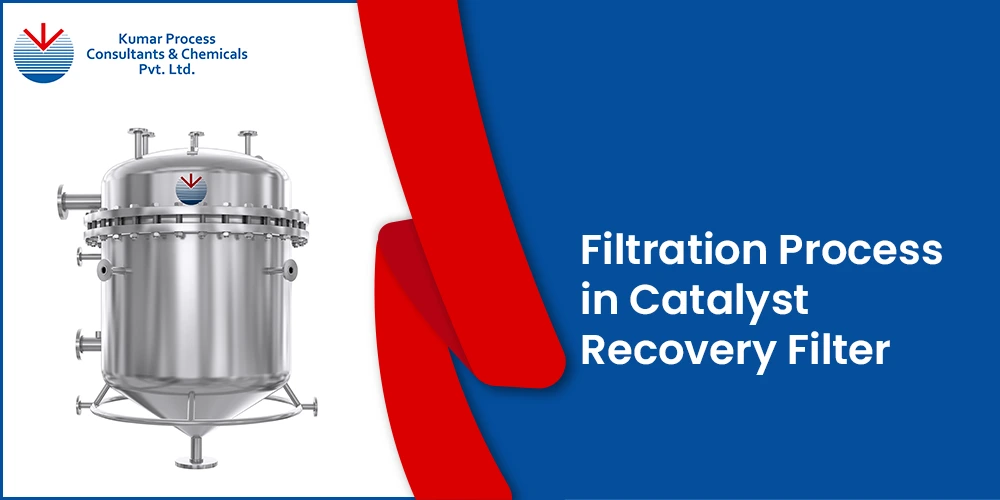Filtration Process in Catalyst Recovery Systems

Overview of Catalyst Recovery Filter
Catalyst recovery filters are extensively used in industries such as petrochemicals, pharmaceuticals, and refineries, where catalysts are used to initiate or enhance specific chemical reactions. These catalyst recovery filtration systems are intended to help in the recycling of catalysts contained in the process fluids. Through proper integration of the catalyst filtration systems, it becomes possible to achieve high levels of purity in the products, enhance productivity, reduce OPEX, and meet the set environmental standards.
How to Choose a Filtration System for Catalyst Recovery filters?
A variety of filter media are used in catalyst recovery filters, each offering unique advantages:
- High Efficiency: The catalyst filtration system should provide precise filtration to maximize catalyst recovery and purify process fluids accurately. Efficient catalyst filtration leads to significant cost savings and improves the final product's quality.
- In-Situ Cleaning: This feature allows for cleaning the catalyst recovery filter elements without taking apart the system. It minimizes downtime and labor costs, ensuring continuous operation with less human intervention. In-situ cleaning is also crucial for safety since some catalysts can ignite when exposed to air, preventing risks during the cleaning process.
- Safety and Operator Protection: The design of the catalyst recovery filter should limit operator exposure to high temperatures and toxic substances. Reducing interaction with process fluids is vital for safety, lowering the chances of exposure to harmful materials.
- Durability and Resistance: Catalyst filter elements need to handle high temperatures and reactive fluids while maintaining strong mechanical properties to withstand pressure changes. Using materials like stainless steel for the pressure vessel and sintered porous metals for filtration ensures the catalyst filtration system is robust and long-lasting.
Filtration Media Used for Catalyst Filtration
A variety of filtration products are used in catalyst recovery, each offering unique advantages:
Process for Catalyst Filtration
The filtration of catalyst recovery filter process involves following below steps to ensure efficient recovery and purification:
- Fluid Introduction: The unfiltered fluid is introduced into the catalyst filtration system through an inlet.
- Filtration: The fluid then goes through the filter elements where catalysts and contaminants are lodged. The clean fluid is channeled through to the outlet.
- Pressure Monitoring: With the growth of catalyst cake on the filter elements, the pressure drop rises, and the flow rate starts to drop. At a certain pressure drop, the system initiates the cleaning process.
- Backwashing: The system uses back purge media like compressed air or nitrogen to clean the filter elements without the need of disassembling them.
- Collection: The collected catalysts are returned to the system via a drain valve or recycled back into the process.
Advantages of Catalyst Recovery Filters
Using a catalyst recovery filter brings many benefits:
- Cost Reduction: By recovering the catalyst used in reactions, you won’t need to replace it often, saving significant money.
- Environmental Safety: These systems help reduce the risk of spills and waste, creating a safer and cleaner environment.
- Operational Efficiency: Features like in-situ cleaning and automatic backwashing cut downtime, enhancing overall process efficiency.
- Product Quality: Proper filtration ensures better fluid purification, leading to higher product quality.
- Safety: These systems protect operators from exposure to harmful chemicals and heat, making the workplace safer.
Why Choose Us for Catalyst Filtration Needs?
At Kumar Process Consultants, we have over 45 years of experience in designing and building effective catalyst filtration systems. Our catalyst recovery filter systems use high-quality materials, like SS316L and sintered metals, to ensure long-lasting performance. We collaborate with industry partners to ensure our filtration products work effectively.
- Proven Track Record: We have completed over 100 successful installations in the past 10 years, demonstrating our ability to provide efficient catalyst filtration solutions.
- Customized Solutions: Our designs are tailored to meet the specific processes they serve, ensuring the best results.
- Comprehensive Support: We provide complete services, from a free initial assessment to installation and maintenance of the system.
For more information or to discuss your specific needs, contact us at info@kumarfilters.com or fill out our inquiry form.


